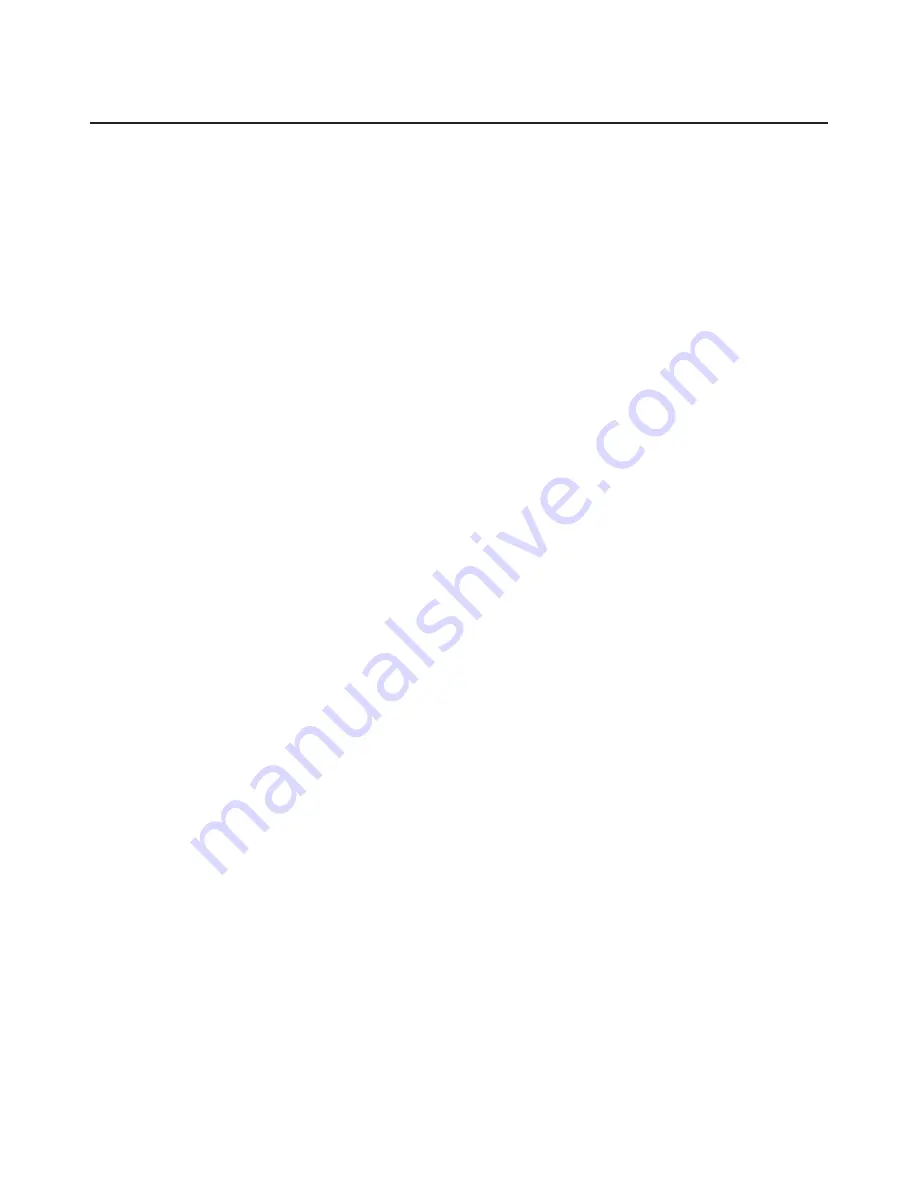
FLIGHT SURFACES (Cont.)
AILERON (Cont.)
REMOVAL OF AILERON. (Refer to Figure 2.)
1. Disconnect the aileron control rod at the aileron attachment point by removing the nut, washers and
bolt from the rod end bearing. To simplify installation note location of washers removed.
2. Remove the attaching nuts, bolts and washers from the hinges at the leading edge of the aileron, and
remove the aileron.
INSTALLATION OF AILERON. (Refer to Figure 2.)
1. Move the aileron into place and install attaching bolts, washers and nuts. Ascertain that the aileron is
free to move with no interference.
2. Attach the aileron control rod with bolts, washers and nut, dividing the washers so that the aileron is
free to rotate from stop to stop without the control rod binding or rubbing on the opening in the aft
spar. Be certain that the rod end bearing has no side play when tightening the bolt and that the rod does
not contact the side of the bracket.
3. Actuate the aileron controls to insure freedom of movement.
CHECKING AILERON FREE PLAY.
The following checks are recommended before balancing to ascertain the amount of “free play” in the
aileron:
Set the aileron in its neutral position and secure. Obtain a straightedge long enough to extend from the
ground up to a few inches above the aileron trailing edge. Place the straightedge next to the aileron trailing
edge and gently move the aileron up and down, mark the limit of travel (free play) on the straightedge. The
overall travel (free play) must not exceed 0.24 of an inch. Should free play exceed the limit stated make
necessary repairs as required to eliminate free play. Grasp the aileron and move it spanwise (inboard/out-
board) to insure maximum end play of 0.035 of an inch is not exceeded.
BALANCING AILERON (Refer to Figure 3)
– WARNING –
All control surfaces that have been replaced repainted, or
repaired, must be rebalanced according to the procedures in
this manual.
Position the aileron on the balancing fixture in a draft free area and in a manner which allows unrestricted
movement of the aileron. Place the tool on the aileron, avoiding rivets, and keep the beam perpendicular to
the hinge centerline. Read the scale when the bubble level has been centered by adjustment of the movable
proceed as follows:
1. Leading edge heavy: This condition is highly improbable; recheck measurements and calculations.
2. Trailing edge heavy: There are no provisions for adding weight to balance weight to counteract a trailing
edge heavy condition. Therefore, it will be necessary to determine the exact cause of the unbalance. If
the aileron is too heavy because of painting over old paint, it will be necessary to strip all paint from
the aileron and repaint. If the aileron is too heavy resulting from repair to the skin or ribs, it will be
necessary to replace all damaged parts and recheck the balance.
PIPER AIRCRAFT
PA-32R-301/301T
MAINTENANCE MANUAL
57-50-00
Page 57-13
Reissued: July 1, 1993
3J14
Summary of Contents for PA-32R-301T SARATOGA S
Page 26: ...CHAPTER 4 AIRWORTHINESS LIMITATIONS 1C1 ...
Page 29: ...CHAPTER 5 TIME LIMITS MAINTENANCE CHECKS 1C4 ...
Page 53: ...CHAPTER 6 DIMENSIONS AND AREAS 1D6 ...
Page 64: ...CHAPTER 7 LIFTING AND SHORING 1D21 ...
Page 68: ...CHAPTER 8 LEVELING AND WEIGHING 1E1 ...
Page 72: ...CHAPTER 9 TOWING AND TAXIING 1E5 ...
Page 76: ...CHAPTER 10 PARKING AND MOORING 1E9 ...
Page 80: ...CHAPTER 11 REQUIRED PLACARDS 1E13 ...
Page 92: ...CHAPTER 12 SERVICING 1F1 ...
Page 126: ...CHAPTER 20 STANDARD PRACTICES AIRFRAME 1G17 ...
Page 127: ...THIS PAGE INTENTIONALLY LEFT BLANK ...
Page 139: ...CHAPTER 21 ENVIRONMENTAL SYSTEMS 1H5 ...
Page 188: ...CHAPTER 22 AUTOFLIGHT 1J7 ...
Page 193: ...CHAPTER 23 COMMUNICATIONS 1J12 ...
Page 203: ...CHAPTER 24 ELECTRICAL POWER 1J22 ...
Page 263: ...CHAPTER 25 EQUIPMENT FURNISHINGS 2A13 ...
Page 269: ...CHAPTER 27 FLIGHT CONTROLS 2A20 ...
Page 332: ...CHAPTER 28 FUEL 2D11 ...
Page 363: ...CHAPTER 29 HYDRAULIC POWER 2E18 ...
Page 404: ...CHAPTER 30 ICE AND RAIN PROTECTION 2G16 ...
Page 470: ...CHAPTER 32 LANDING GEAR 3A13 ...
Page 550: ...CHAPTER 33 LIGHTS 3D24 ...
Page 562: ...CHAPTER 34 NAVIGATION AND PITOT STATIC 3E12 ...
Page 582: ...CHAPTER 35 OXYGEN 3F8 ...
Page 604: ...CHAPTER 37 VACUUM 3G6 ...
Page 616: ...CHAPTER 39 3G18 ELECTRIC ELECTRONIC PANELS MULTIPURPOSE PARTS ...
Page 620: ...CHAPTER 51 STRUCTURES 3G22 ...
Page 636: ...CHAPTER 52 DOORS 3H14 ...
Page 650: ...CHAPTER 55 STABILIZERS 3I4 ...
Page 662: ...CHAPTER 56 WINDOWS 3I16 ...
Page 670: ...CHAPTER 57 WINGS 3I24 ...
Page 688: ...CHAPTER 61 PROPELLER 3J18 ...
Page 704: ...CHAPTER 70 STANDARD PRACTICES ENGINES 3K10 ...
Page 708: ...CHAPTER 71 POWER PLANT 3K14 ...
Page 737: ...CHAPTER 73 ENGINE FUEL SYSTEM 4A13 ...
Page 749: ...CHAPTER 74 IGNITION 4B1 ...
Page 783: ...CHAPTER 77 ENGINE INDICATING 4C11 ...
Page 793: ...CHAPTER 78 EXHAUST 4C21 ...
Page 801: ...CHAPTER 79 OIL 4D5 ...
Page 805: ...CHAPTER 80 STARTING 4D9 ...
Page 819: ...CHAPTER 81 TURBINES 4D23 ...
Page 833: ...CHAPTER 91 CHARTS WIRING DIAGRAMS 4E13 ...
















































